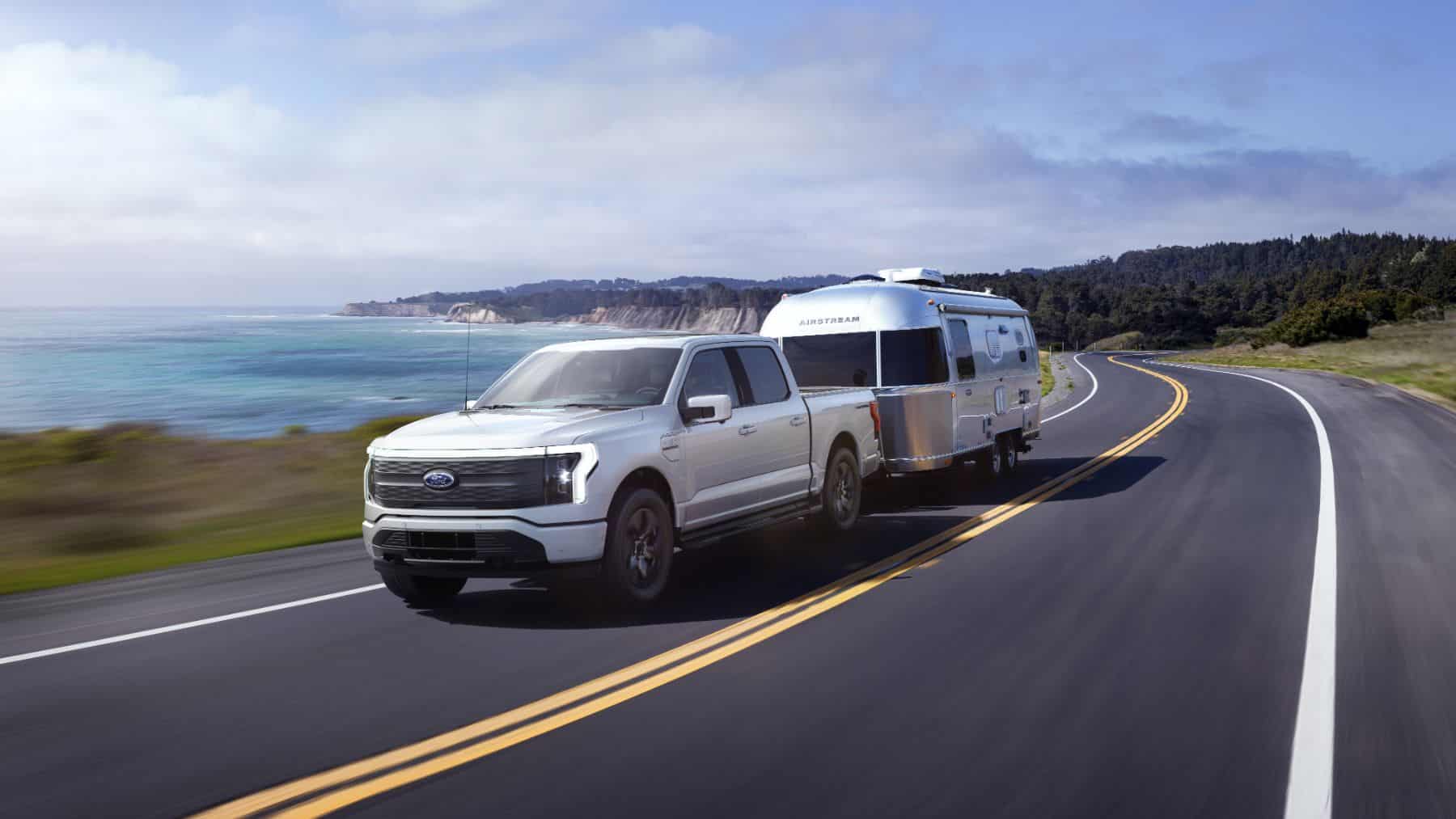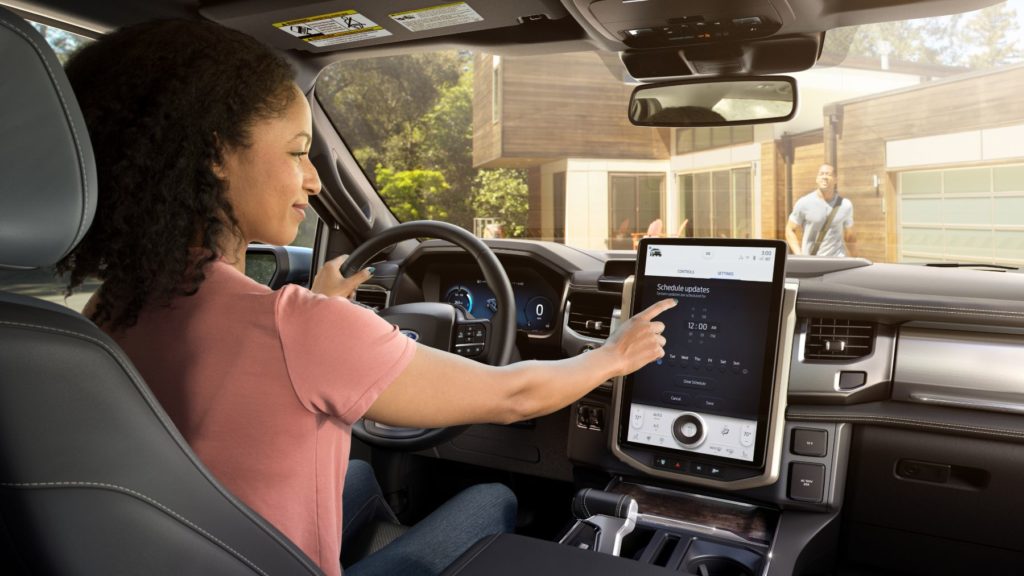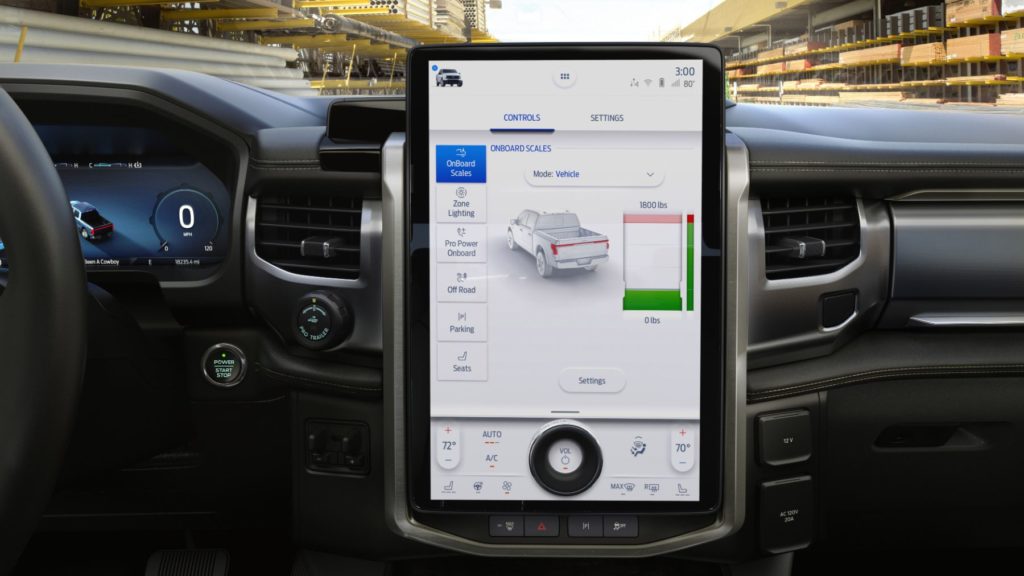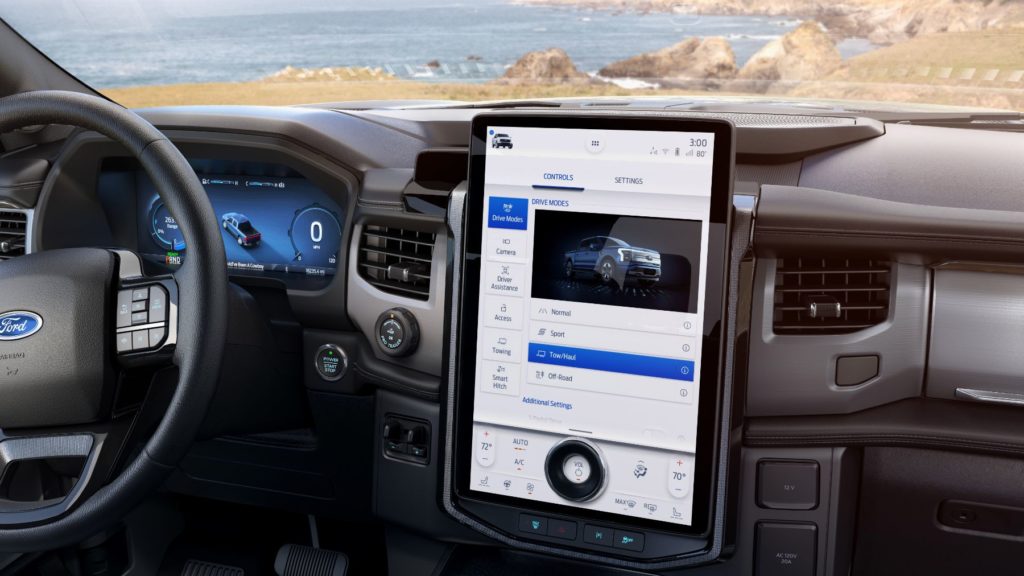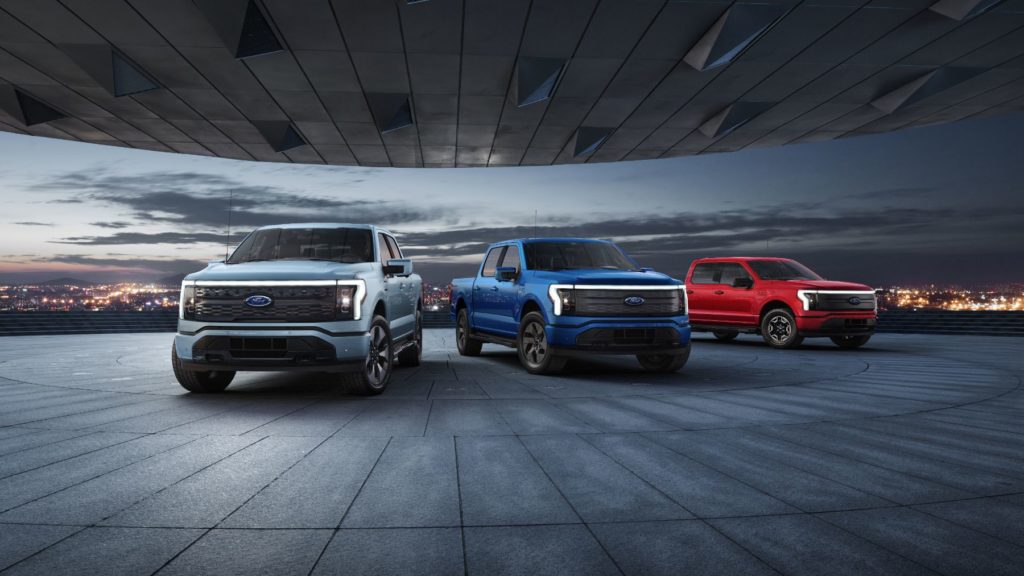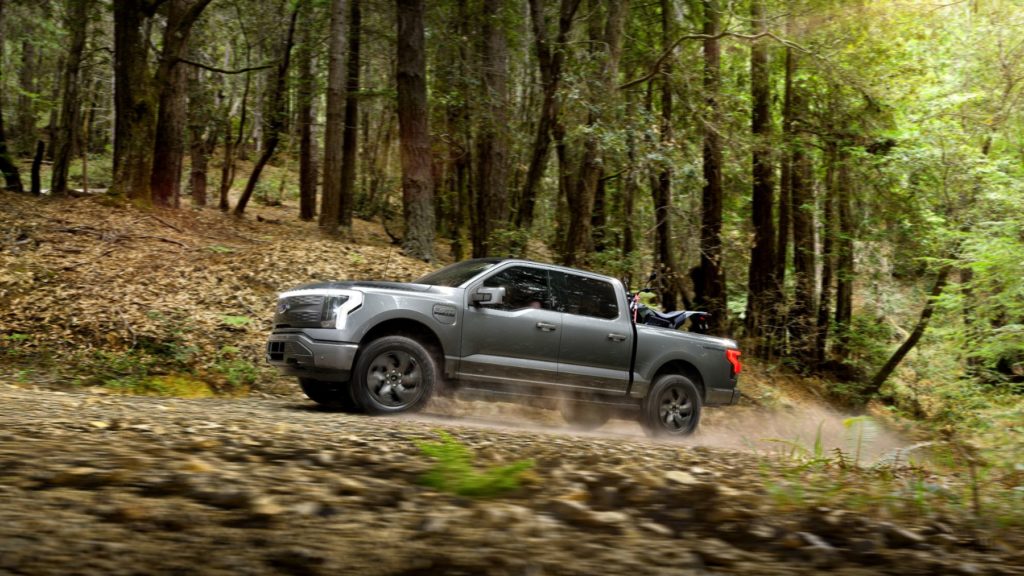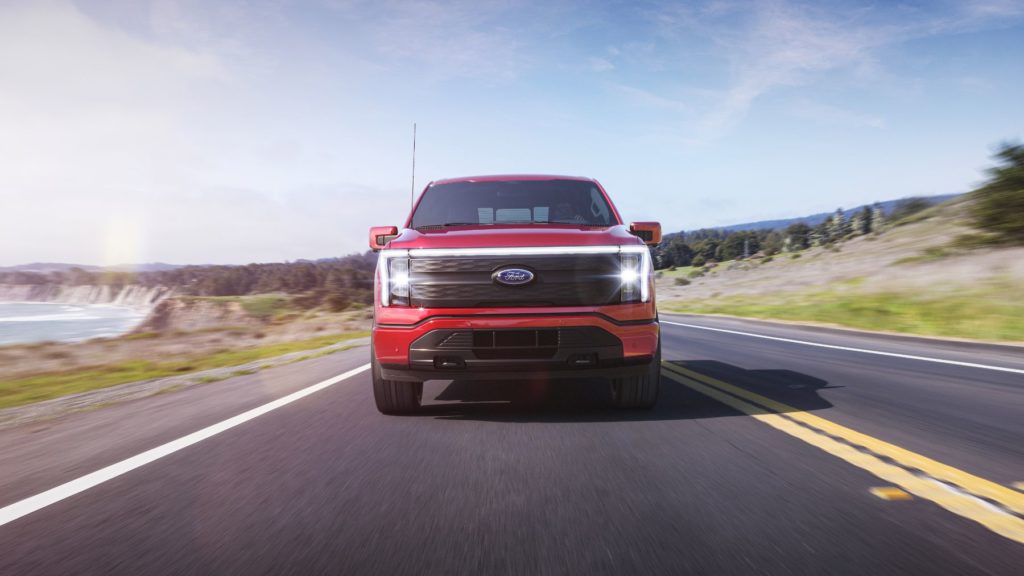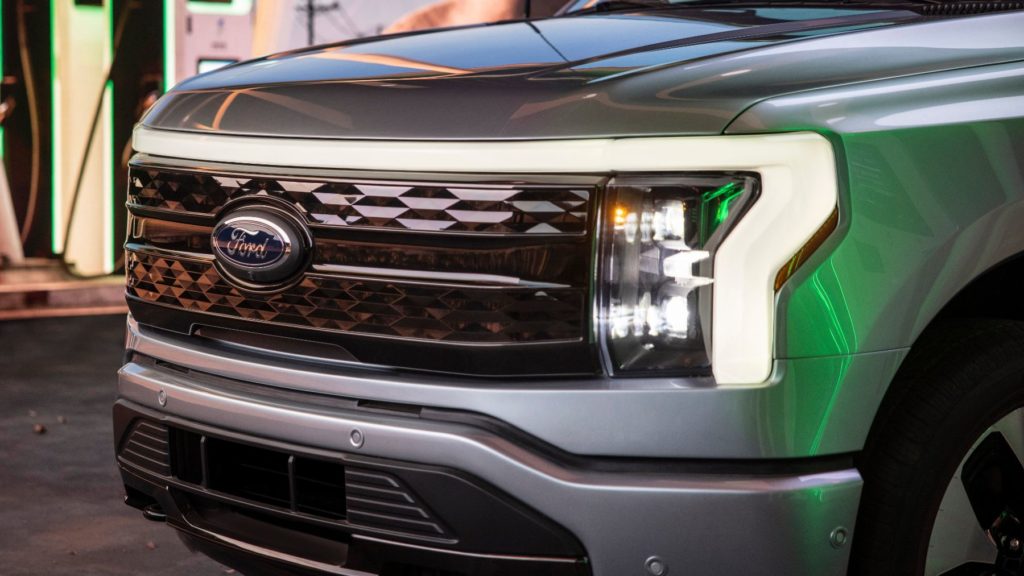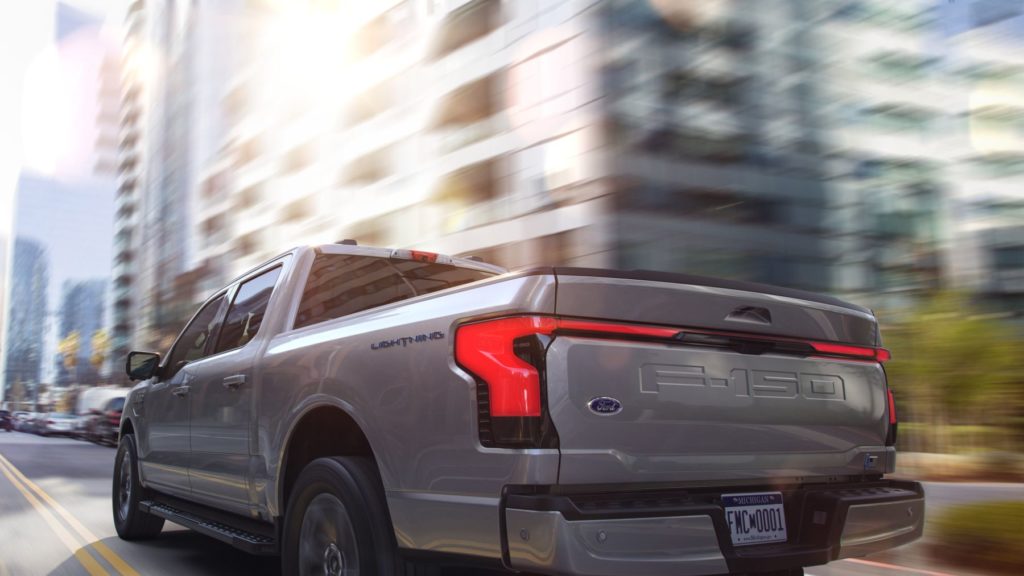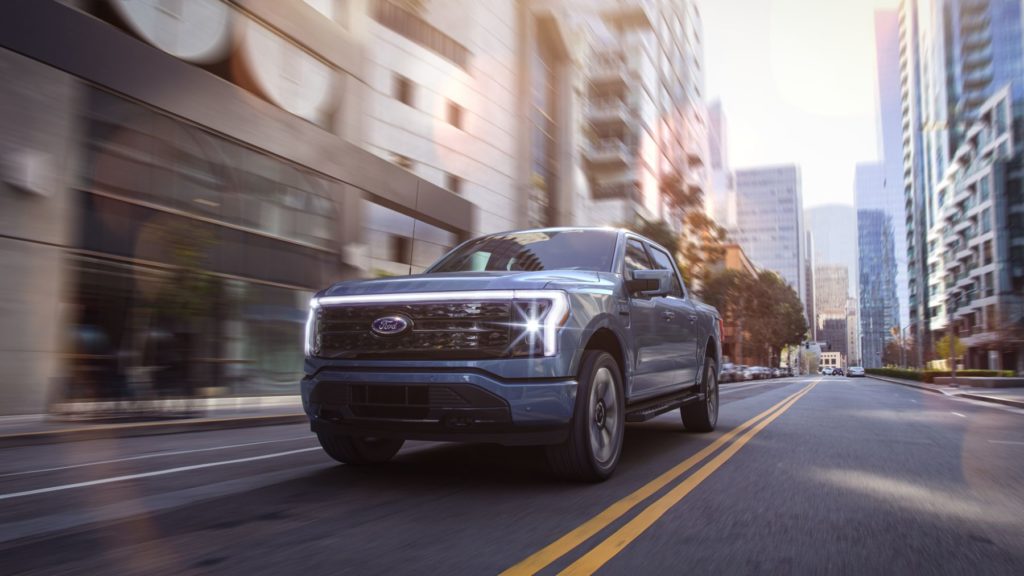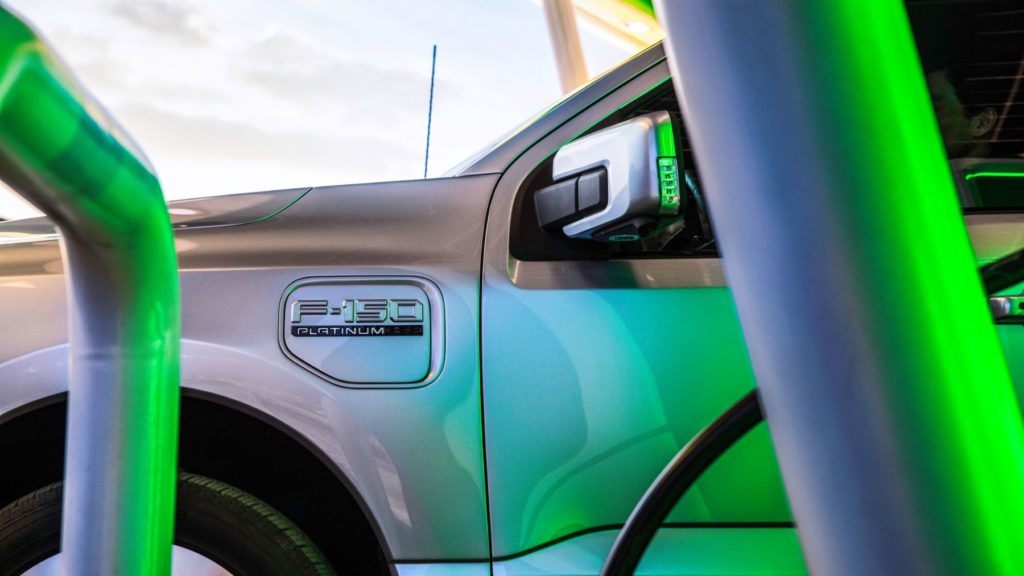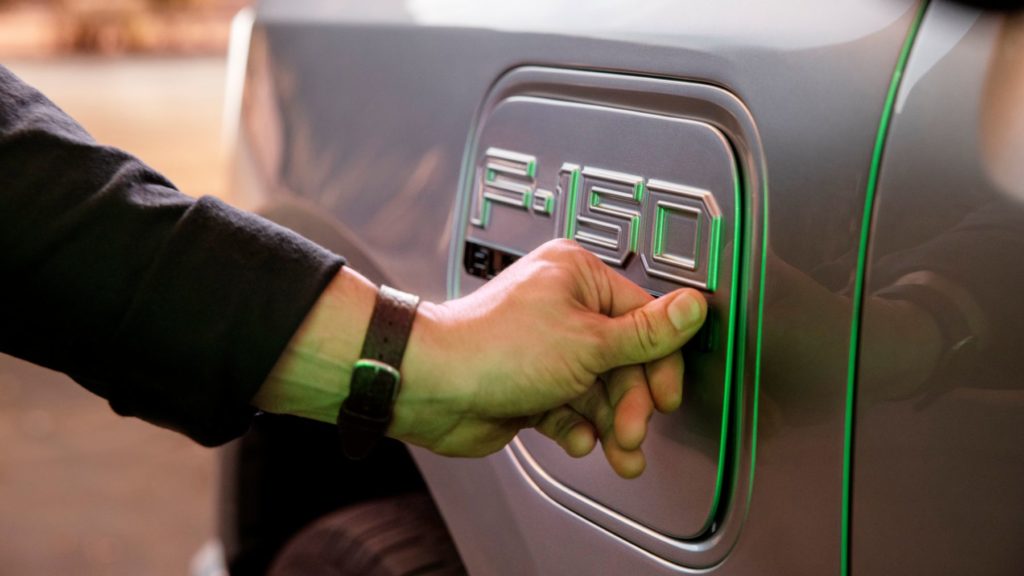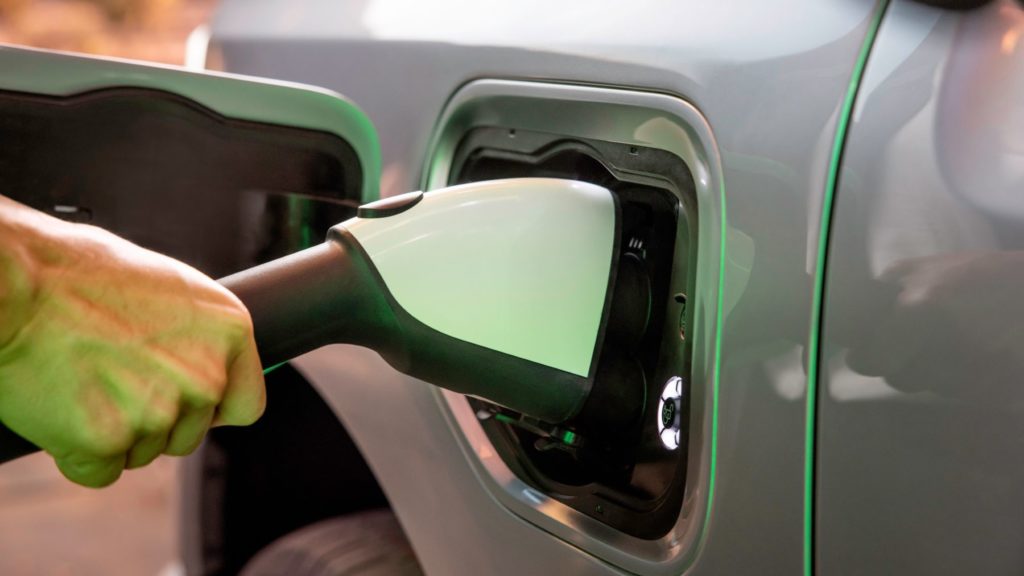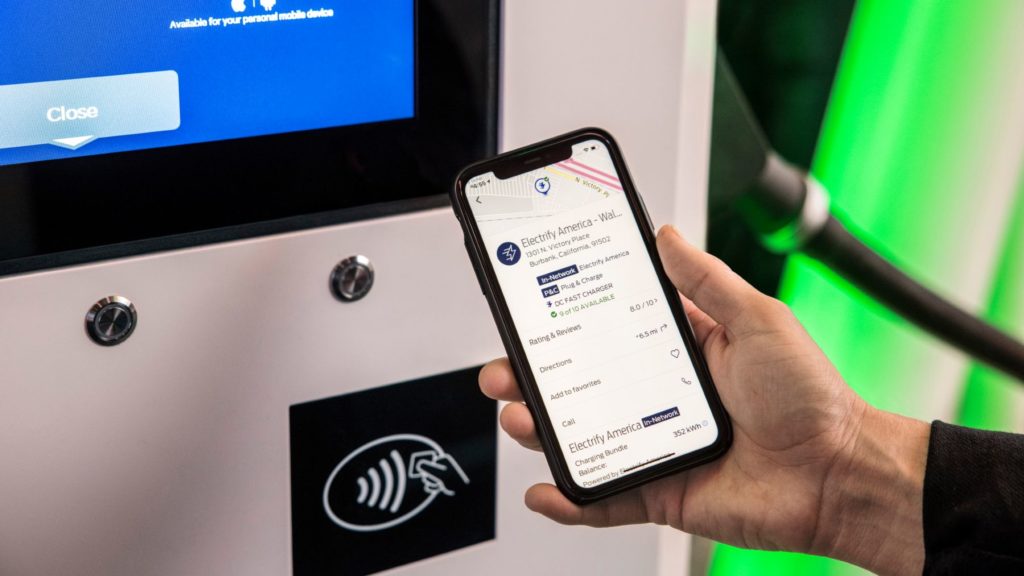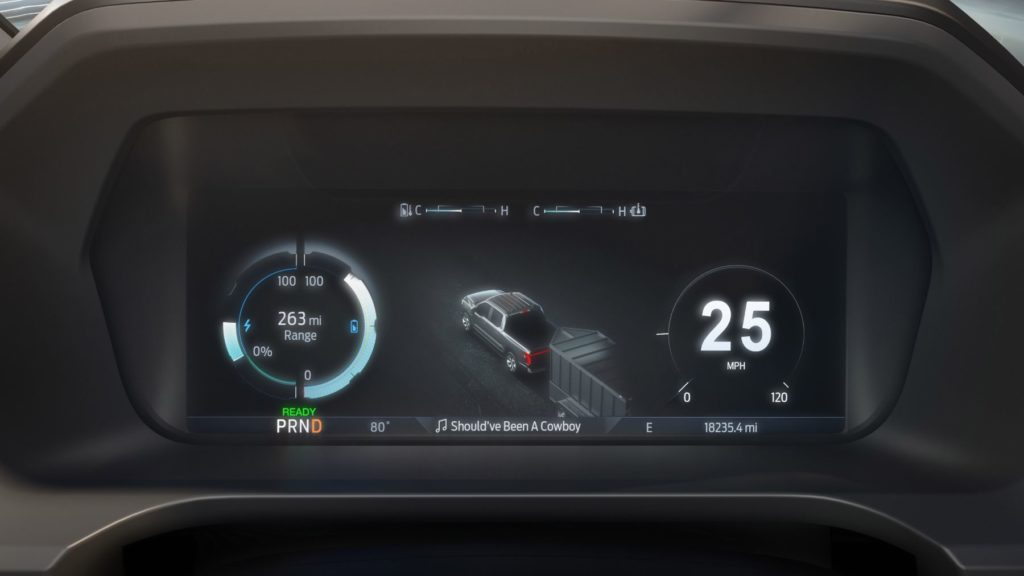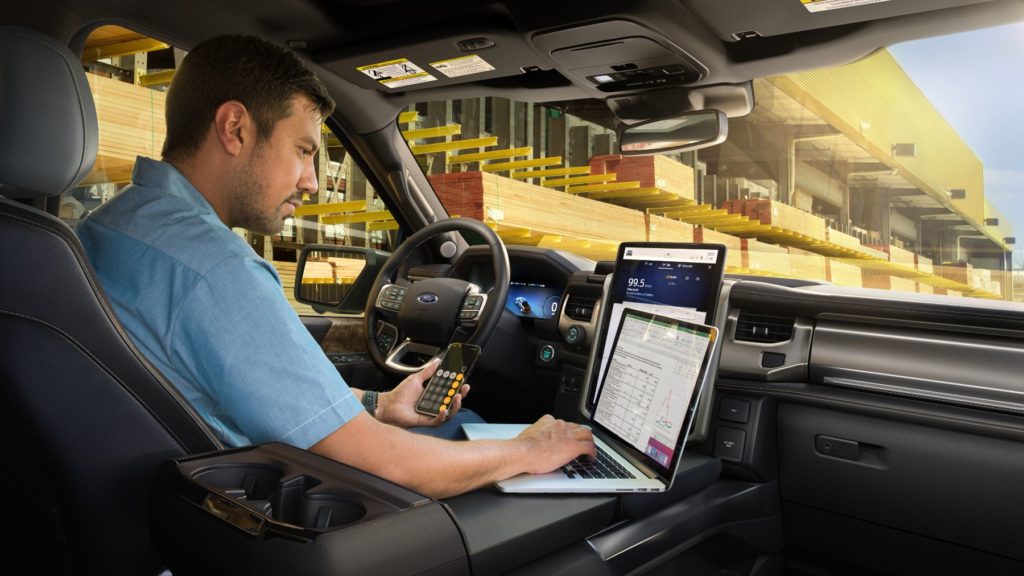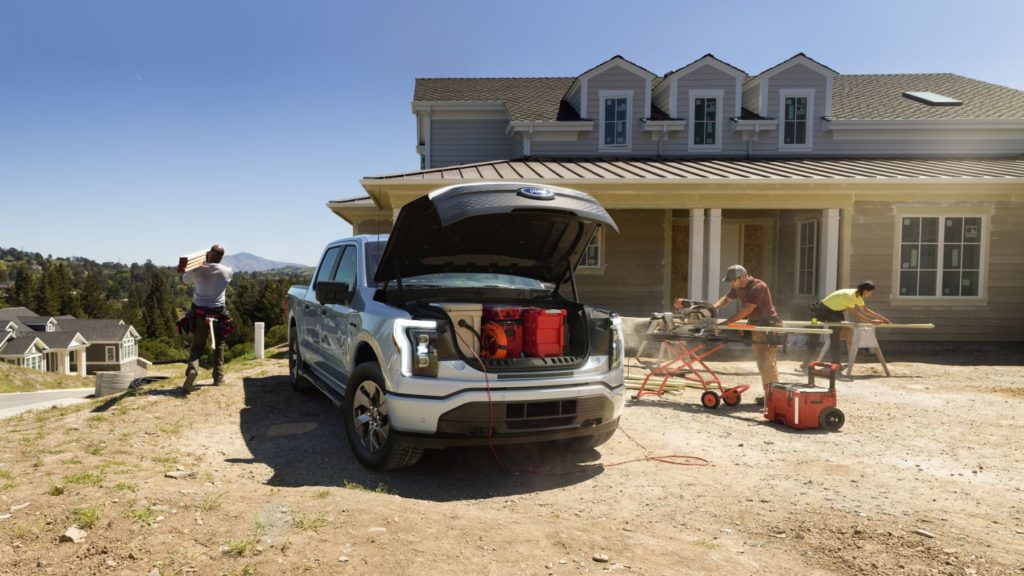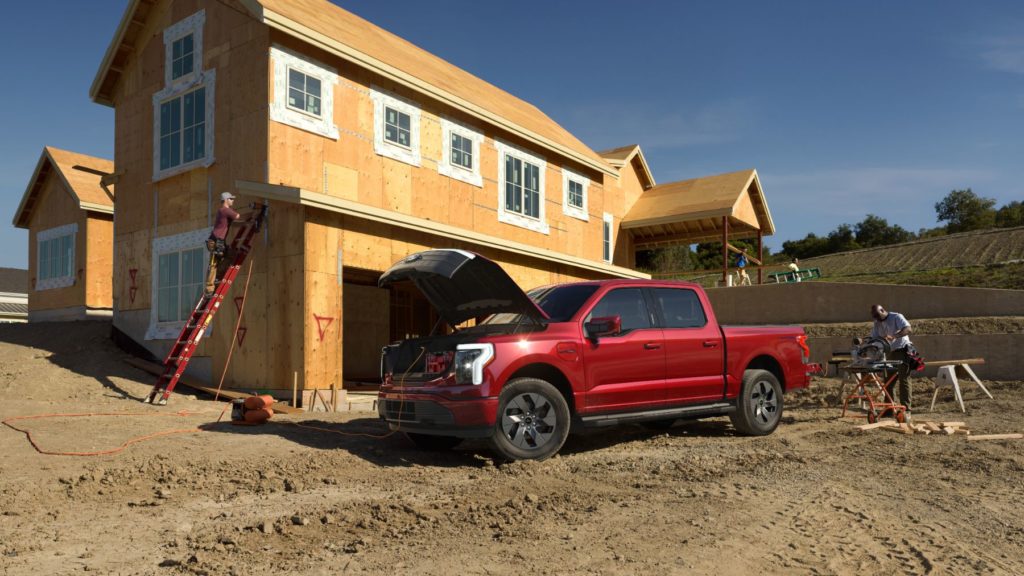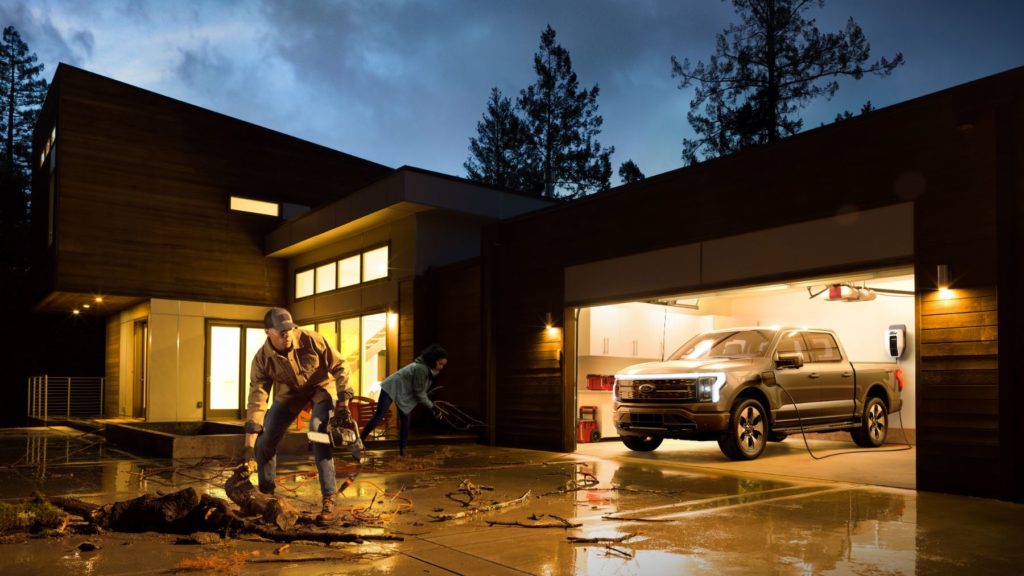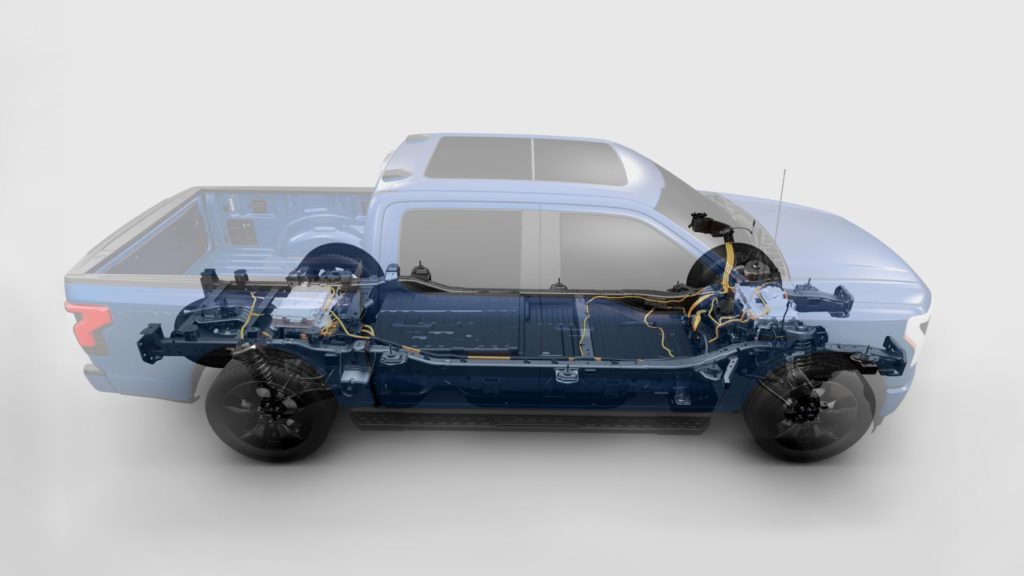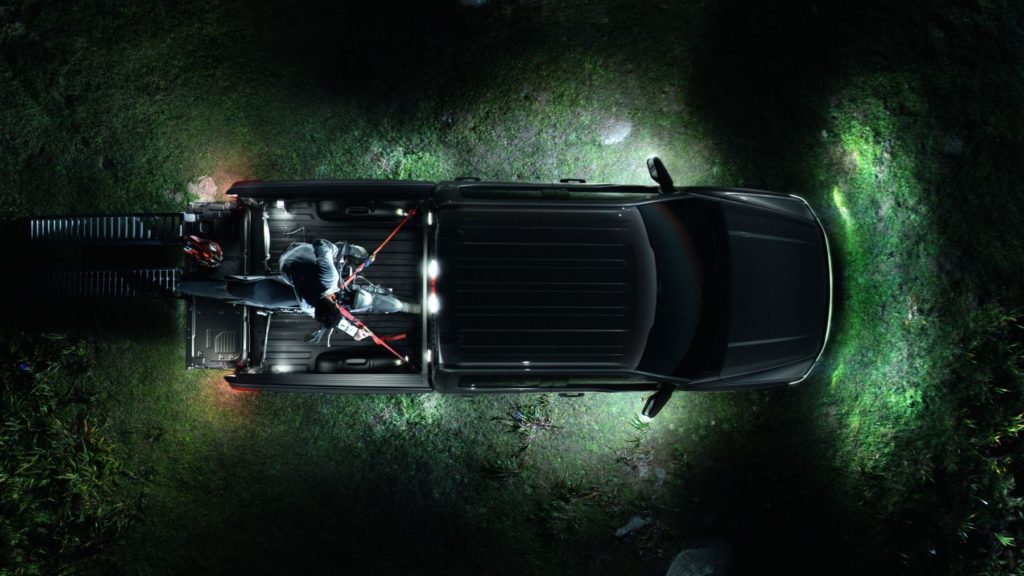The 2022 F-150 Lightning marks an important transition in Ford’s history. It’s the first-ever all-electric iteration of Ford’s bestselling truck, and Ford took its sweet time reinventing a perennial favorite.
President Joe Biden recently took the F-150 Lightning for a spin during a visit to the Dearborn Truck Plant. President Biden was deeply impressed (to say the least) with the Ford F-150 Lightning’s propensity for speed. “This sucker’s quick,” he said from the driver’s seat after pulling over in front of photographers and reporters at the track.
It’s not every day you get an enthusiastic reaction from an esteemed world leader after driving a truck.
Ford F-150 Lightning: Performance & Range
All 2022 Ford F-150 Lightning models will have two electric motors, one on each axle. However, you’ll have two battery options. The Standard Range truck is suitable for 230 miles of range, while the Extended Range model can reach 300 miles before needing a recharge. Both the Standard Range and Extended Range F-150 Lightning are pumping out about 775 lb-ft. of torque (the most ever for an F-150), but the horsepower numbers and towing capacity will vary on the battery size.
“We’re not here to make an electric truck for the few. Ford is committed to building one that solves real problems for real people,” said Kumar Galhotra, Ford president, Americas and International Markets Group, Ford Motor Company. “F-150 Lightning delivers everything we’ve said electric vehicles can offer, plus the capability expected from a Built Tough Ford truck – not just near-instant torque but powerful towing and hauling customers can depend on.”
Ford is not yet talking about the exact battery specs, but the Standard Range model will produce around 426 horsepower and rush from zero to 60 mph in about five seconds. It also has a maximum payload of 2,000 lbs. and a maximum tow rating of 5,000 lbs. The Maximum Trailer Tow Package increases the towing capacity to 7,700 lbs.
Meanwhile, the Extended Range model will have around 563 horsepower, enough to accelerate from zero to 60 mph in about four seconds; President Biden did it in 4.4 seconds. According to Ford, the Extended Range model can tow up to 10,000 lbs. with a max payload rating of 1,800 lbs.
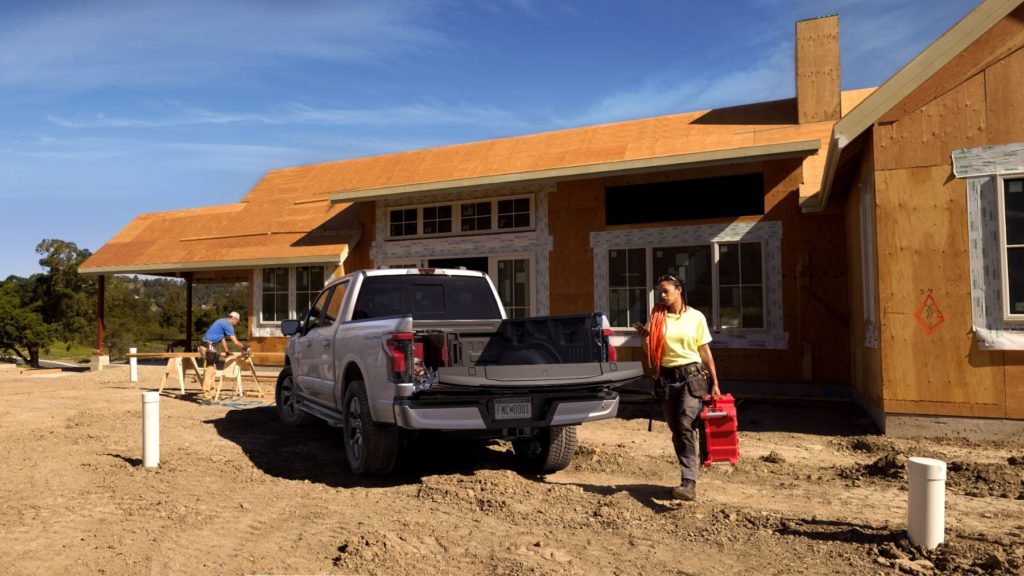
Ford F-150 Lightning Trim Levels
The 2022 Ford F-150 Lightning will arrive in four trim models: Commercial, XLT, Lariat, and Platinum. All will be initially available in a SuperCrew body style with a 5.5-foot bed, four doors, and seating for five. The Lightning shares the bed and cab dimensions of a standard F-150, although the former is 1,000 lbs. heavier due to the battery pack’s extra weight.
Ford’s Tow Technology Package and Maximum Trailer Tow Package will come standard on the Platinum. The packages include hitch assist, pro trailer backup assist, trailer reverse guidance, a trailer brake controller, smart hitch, onboard scales, and a trailer camera. Platinum trucks ride on 22-inch machined aluminum wheels with Ebony Black pockets, while the XLT and Lariat get 18-inch and 20-inch wheels, respectively.
Charging Capabilities
The 2022 Ford F-150 Lightning has a standard 32A Ford Mobile Charger that supports both 110V and 240V. Ford also has a 48A Connected Charge station and a new 80A Ford Charge Station Pro, but the F-150 Lightning also supports up to 150 kW of DC fast charging.
And if you find one using the FordPass Charging Network, you can recharge the Standard Range battery from 15 to 80 percent in around 44 minutes, while the Extended Range battery recharges from 15 to 80 percent in under 41 minutes.
The F-150 Lightning’s range calculator is a special one. It considers many factors like traffic conditions, wind direction, and towing weight to calculate the driving range. It will even consider the bed load based on the integrated scales to give the driver a more accurate range estimate.
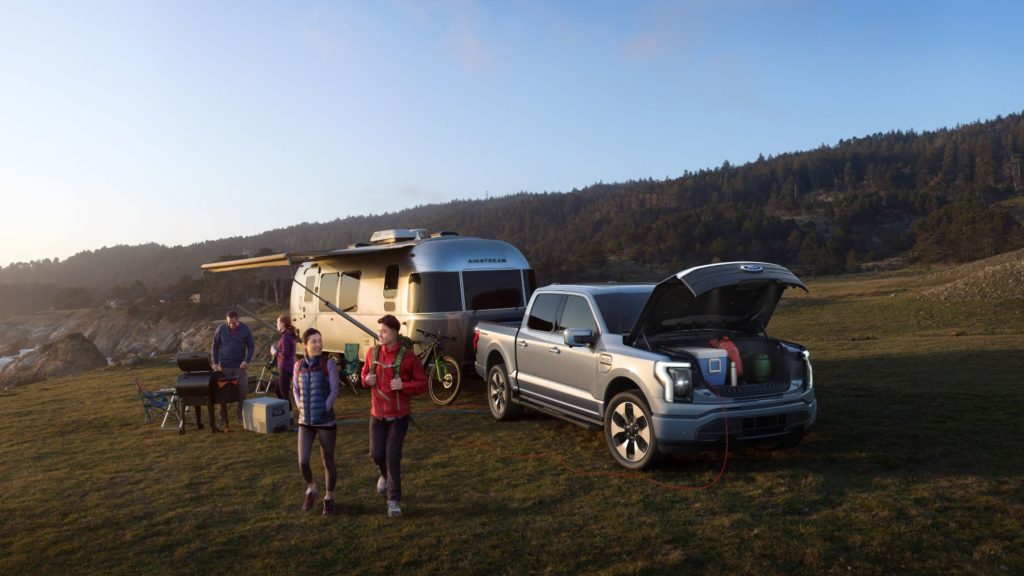
Endlessly Practical
Unlike the Mustang Mach-E’s small 4.8 cubic foot frunk (or front trunk), the 2022 Ford F-150 Lightning has a Mega Power Frunk (that’s what Ford really calls it), offering 14.1 cubic feet of space and a payload rating of 400 lbs. The hood is power-operated and can open or close automatically using the keyfob, Ford’s smartphone app, or by pushing a button inside the cabin.
The Mega Power Frunk has cargo hooks and built-in D rings to secure your belongings. There’s also a drain hole in the underfloor bin, which means you can store ice and food on the way to the campsite. The frunk also has two USB chargers and four power outlets to plug in your laptop, TV, or refrigerator. At the rear, the new Ford F-150 Lightning has a power tailgate (standard on Lariat and Platinum) and LED bed lighting.
New Age Tech Features
The 2022 Ford F-150 Lightning is oozing with tech both inside and outside. The XLT has a 12-inch landscape infotainment screen, while the Lariat and Platinum have a 15.5-inch portrait touchscreen display. Standard across all three trims is a 12-inch digital instrument cluster. Ford’s SYNC 4 is standard in the XLT, while the Lariat and Platinum have Sync 4A like the Mustang Mach-E.
The F-150 Lightning XLT, Lariat, and Platinum also receive wireless Apple CarPlay and Android Auto, standard navigation, 4G LTE Wi-Fi hotspot, and OTA (over-the-air) updates. We’re also glad Ford included a physical volume knob in the list of standard equipment. Additional tech features include a 360-degree camera, dynamic-bending LED projector headlights, and a fold-out interior work table.
Mobile Power Station
Sure, who doesn’t want to drive an electric F-150 like the Lightning? But if you’re not on the road, Ford has thought about putting all that battery power to good use. The XLT has a 2.4 kW Pro Power Onboard system with eight 120V outlets to power tools, appliances, or worksite equipment.
The Lariat and Platinum have a 9.6 kW power station with two 120V outlets in the cabin, four in the bed, four in the frunk, and a single 240V outlet in the bed. Optional is the Ford Intelligent Backup Power system with the 80A Ford Charge Station Pro, a system that uses the truck’s battery to power your home during emergencies.
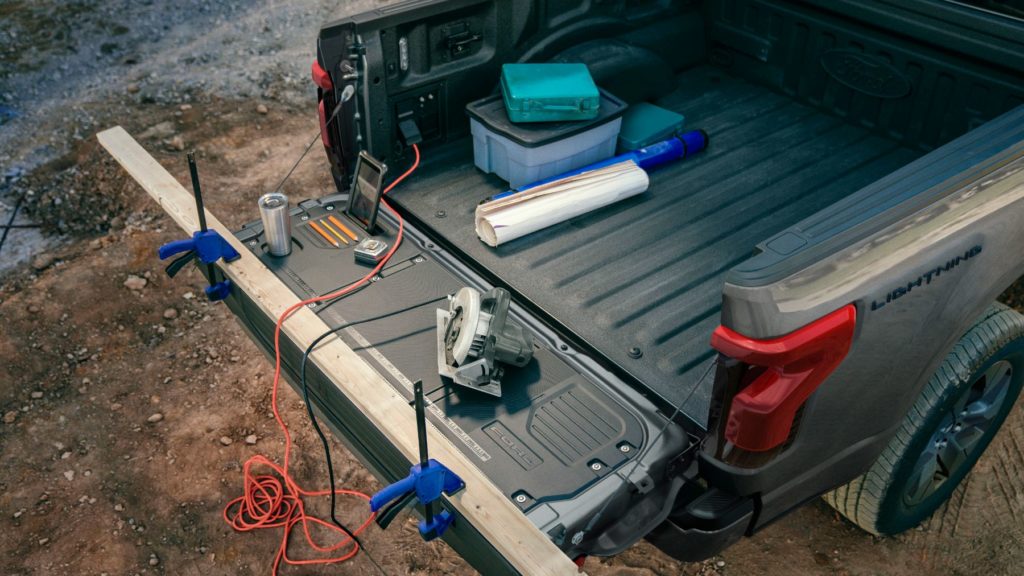
Advanced Safety Features
Ford Co-Pilot 360 2.0 is standard on the 2022 F-150 Lightning and comes with lane-keeping assistance, pre-collision warning with automatic emergency braking, and blind-spot monitoring. Ford’s Co-Pilot Assist 2.0 is standard on Lariat and Platinum and includes adaptive cruise control, lane centering, and evasive steering assist. Standard on the Platinum is Ford Co-Pilot 360 Active 2.0 with BlueCruise technology. According to Ford, BlueCruise allows a driver to operate the Lightning hands-free on prequalified sections of divided highways called “Hands-Free Blue Zones.”
Ford F-150 Lightning: Pricing & Availability
The 2022 Ford F-150 Lightning is breaking expectations in terms of price. The base Commercial trim starts at only $39,974 before federal and state incentives. The XLT has base prices at $52,974 (before tax credits), while the range-topping Platinum begins at $90,000.
The reservation books are now open for the F-150 Lightning with a $100 refundable deposit. The first deliveries will begin in early 2022. Production is at the newly-renovated River Rouge assembly plant in Dearborn, Michigan.
Alvin Reyes is an Automoblog feature columnist and an expert in sports and performance cars. He studied civil aviation, aeronautics, and accountancy in his younger years and is still very much smitten to his former Lancer GSR and Galant SS. He also likes fried chicken, music, and herbal medicine.
Photos & Source: Ford Motor Company.

